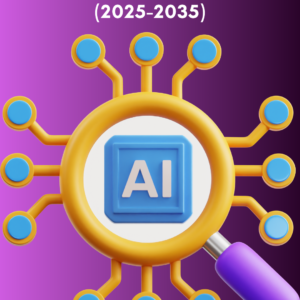1. Executive Summary
- Key findings on HBM4 and future nodes
- Projected impact on semiconductor industry
- Top trends shaping HBM development and adoption
2. Introduction to High Bandwidth Memory
- Brief history and evolution of HBM technology
- Current state of HBM (HBM2E, HBM3)
- Importance in high-performance computing and AI/ML applications
3. Manufacturing Technologies for HBM4 and Beyond
- Advanced process nodes for HBM manufacturing
- Innovations in DRAM cell design and architecture
- Emerging materials and their potential impact
- Key challenges in scaling HBM technology
4. Integration of HBM4+ with Logic Dies
- Overview of 2.5D and 3D stacking technologies
- Advanced packaging solutions for HBM-logic integration
- Thermal management challenges and solutions
- Interconnect technologies for high-bandwidth, low-latency communication
5. 2.5D Integration Trends
- Advancements in interposer technology
- Silicon and organic interposer comparisons
- Innovations in through-silicon via (TSV) technology
- Cost reduction strategies for 2.5D integration
6. 3D Stacking Advancements
- Hybrid bonding technologies
- Die-to-die (D2D) interconnect innovations
- Challenges and solutions in ultra-high density 3D integration
- Impact on overall system performance and power efficiency
7. Customization Drivers for HBM4+
- Increasing demand for application-specific memory solutions
- AI/ML workload requirements driving customization
- Edge computing and IoT influences on HBM design
- High-performance computing (HPC) and exascale computing needs
8. Achieving Customization in HBM4+
- Modular design approaches for HBM
- Customizable cache hierarchies and memory controllers
- Software-defined memory architectures
- Integration of processing-in-memory (PIM) capabilities
9. Performance Projections for HBM4 and Beyond
- Bandwidth and capacity expectations
- Latency reduction techniques
- Power efficiency improvements
- Comparison with competing memory technologies (e.g., HMC, GDDR)
10. Industry Ecosystem and Supply Chain
- Key players in HBM manufacturing and integration
- Collaborative efforts and industry standards
- Impact on semiconductor equipment manufacturers
- Potential bottlenecks and mitigation strategies
11. Applications and Market Demand
- AI/ML and deep learning acceleration
- High-performance graphics and gaming
- Data center and cloud computing
- Automotive and edge computing applications
12. Challenges and Potential Solutions
- Cost reduction strategies for widespread adoption
- Addressing yield and reliability concerns in advanced nodes
- Standardization efforts for improved interoperability
- Balancing performance gains with energy efficiency
13. Future Outlook (2025-2035)
- Potential disruptive technologies in high-bandwidth memory
- Long-term scaling prospects for HBM technology
- Integration with emerging computing paradigms (e.g., neuromorphic, quantum)
- Projected market growth and adoption rates
14. Strategic Implications for Industry Stakeholders
- Recommendations for memory manufacturers
- Considerations for system integrators and OEMs
- Investment opportunities in HBM ecosystem
- Potential impacts on competitive landscape
15. Conclusion
- Key takeaways on HBM4+ manufacturing, integration, and customization
- Critical success factors for future HBM development
16. Appendices
- Glossary of technical terms
- Detailed performance comparisons
- Timeline of HBM technology evolution






